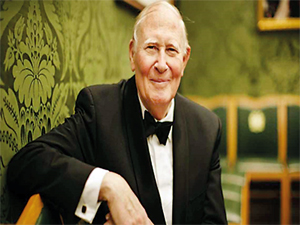Sir Roger Bannister the esteemed Neurologist

Sir Roger Bannister
It is with profound sadness that the medical world joined the sports world in the expression of grief, in the passing away of the world’s first 4-minute miler, Roger Bannister.
He was a 24-year-old Medical student at Oxford when he broke the seemingly insurmountable 4-minute barrier, on the cinder track at Oxford University’s Iffley Road stadium, in a time of 3:59.4, with pacing provided by Chris Chataway and Chris Brasher. It was a cold, wet, blustery day on May 6, 1954, when he took a mid-morning train from Paddington Station to Oxford, nervous about the rainy, windy conditions that afternoon.(The current record is 3:43.13, but the 1 mile run has given way to 1,500 meters. A mile is 1,609 meters). No woman has crossed the 4-minute mile barrier. He gave up competitive running to concentrate on his medical studies.
It is not well known that he was an esteemed Neurologist in the renowned National Hospital for Nervous diseases, in Queens Square, London, considered an apex body in Neurology. He showed the world how to combine sport and everyday living. Later, he was the Master at Pembroke College, Oxford. He was an authority on the Autonomic Nervous System (ANS) –the part of the Nervous System responsible for control of bodily functions not consciously directed, such as breathing, the heart beating, respiration, urination and sexual activity.
In the late 1970’s, The British Council kindly couriered the film on the historical run, for the inaugural Aloysius Memorial Oration I delivered on ‘Disorders of Sitting, Standing, Walking and Running’.
In 1993, at retirement, when asked whether the 4-minute mile was his proudest achievement, he said he felt prouder of his contribution to academic medicine through research, into the responses of the nervous system.
I had the good fortune of being his Registrar in Neurology, in London in 1970-71. During this period, there were no CT and MRI scanners. Diagnosis was clinical, dependent on a focused history and examination, at which Roger Bannister was an expert. The archived histories he had written as a Registrar was an illuminating pleasure to read. He was editor of Brain’s textbook of Clinical Neurology and the comprehensive monogram on the ANS. He was also in charge of the Batten Respiratory Unit in this hospital, catering for Neurological patients requiring ventilation. He was authoritative but kind and gentle, and loved by his patients and juniors.
In 1993, Sir Roger accepted my personal invitation to come to Colombo, to be the chief guest of the SLMA (Sri Lanka Medical Association) in 1994, when I was scheduled to be its President. Sir Roger’s visit was to be sponsored by the IOC (International Olympic committee) of Sri Lanka. Unfortunately, he decided against coming to Sri Lanka, when President Ranasinghe Premadasa succumbed to a terrorist attack on May 1, 1993. We kept our friendship for many years and met at international conferences. He has left an indelible legacy for all time in Sports and Neurology.


